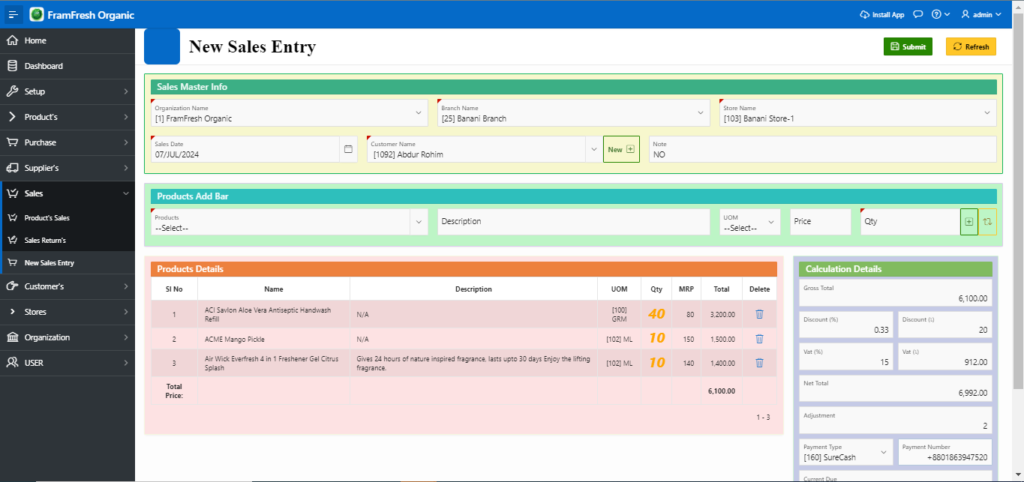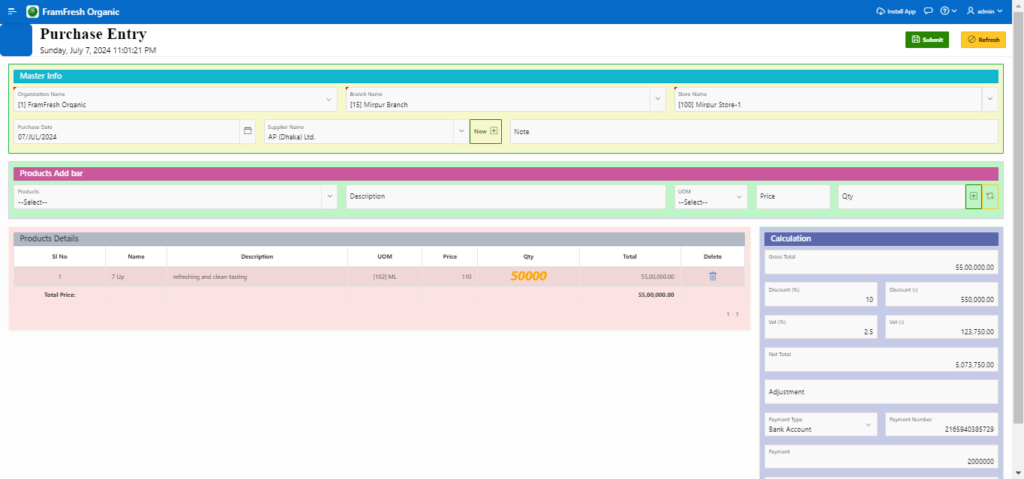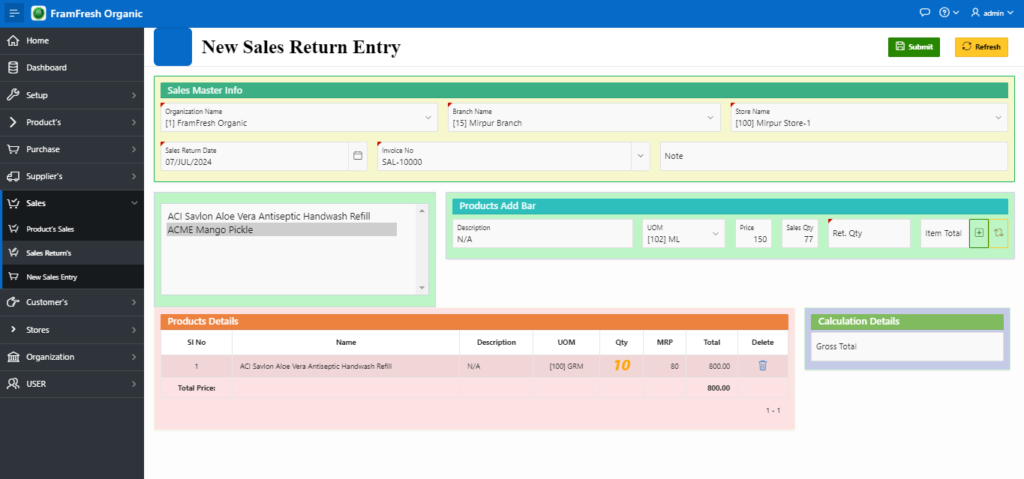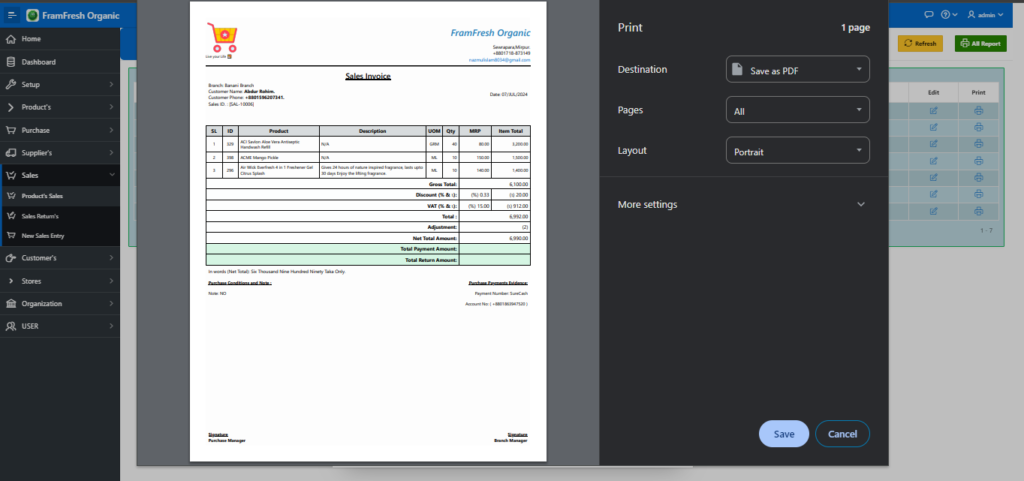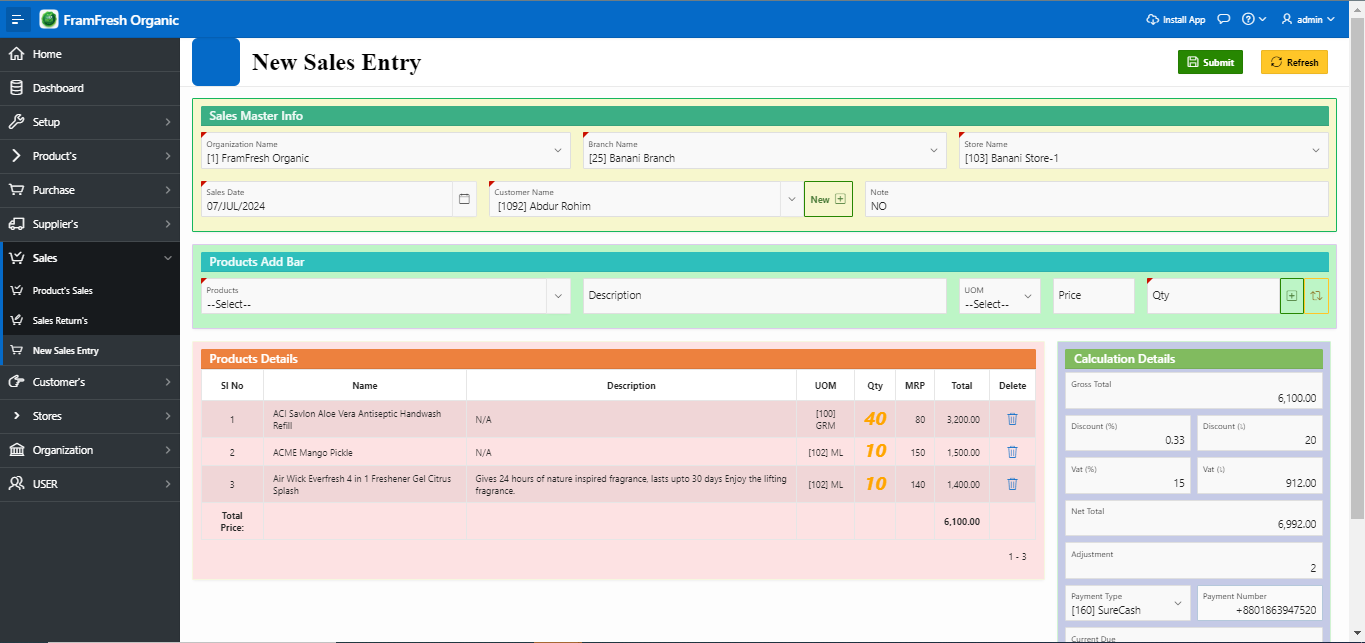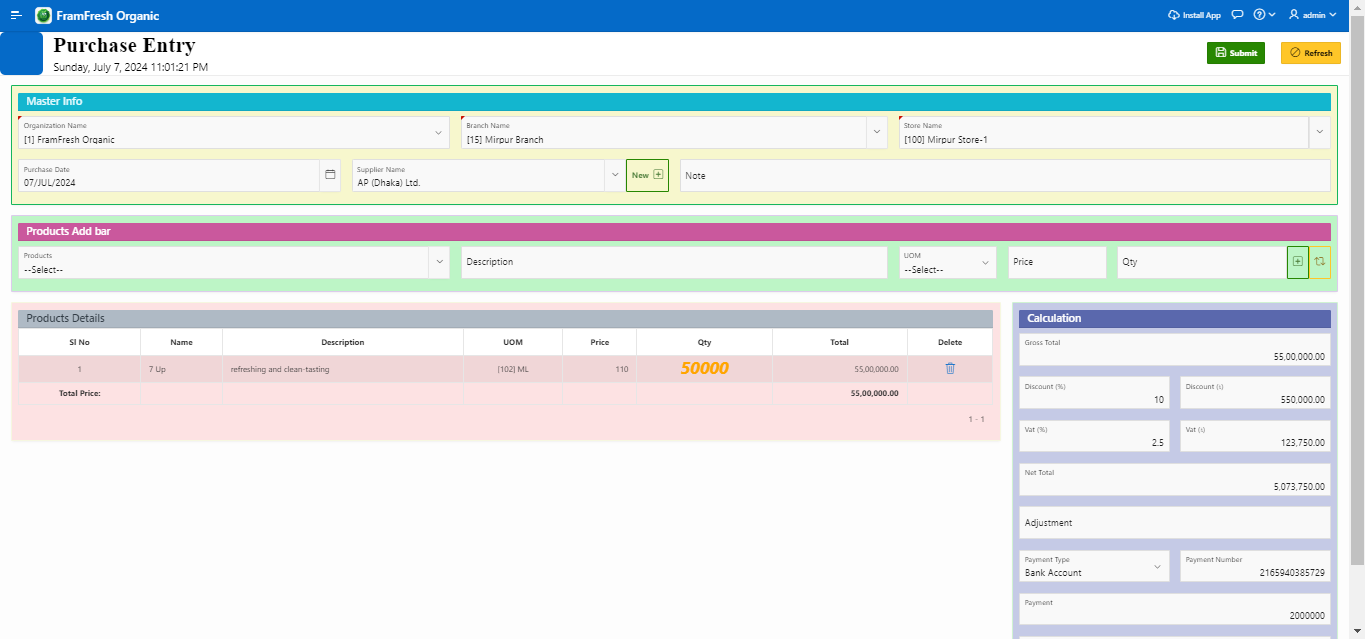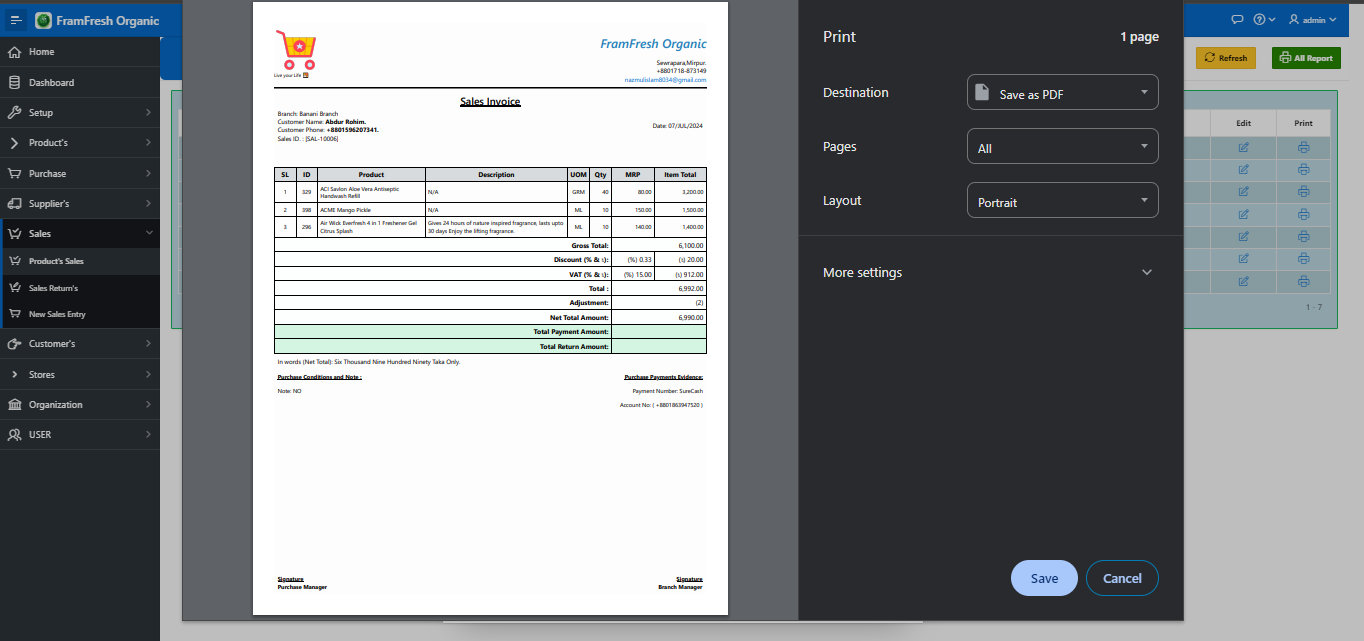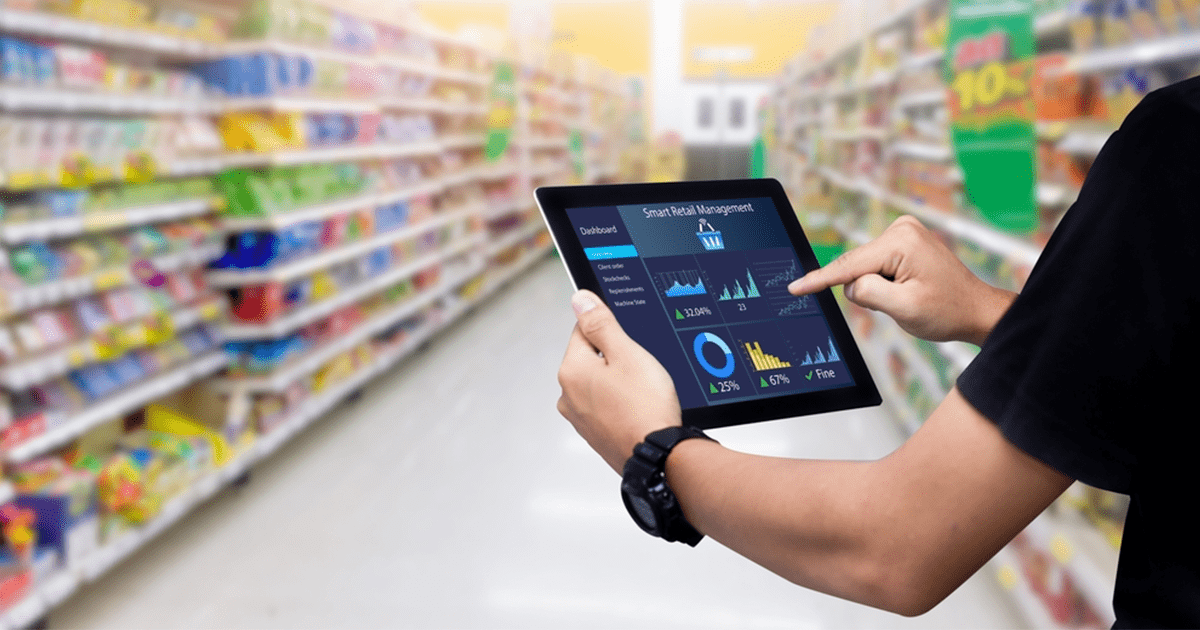A Super Shop Management System (SSMS) is a software solution designed to streamline and optimize the operations of a retail supermarket. Here are the key features of a comprehensive Super Shop Management System:
1. Inventory Management
- Product Catalog: Centralized database of all products including descriptions, SKUs, barcodes, and categories.
- Stock Management: Real-time tracking of inventory levels, stock replenishment alerts, and automated reorder processes.
- Supplier Management: Maintain details of suppliers and manage purchase orders, deliveries, and returns.
2. Point of Sale (POS)
- Billing and Checkout: Fast and efficient billing with barcode scanning, multiple payment methods, and receipt generation.
- Sales Tracking: Monitor sales transactions, track sales trends, and generate daily, weekly, and monthly sales reports.
- Customer Management: Capture customer details during checkout for personalized marketing and loyalty programs.
3. Customer Relationship Management (CRM)
- Loyalty Programs: Implement and manage customer loyalty programs, reward points, and discount schemes.
- Customer Database: Maintain a database of customer profiles, purchase history, and preferences.
- Targeted Marketing: Run targeted marketing campaigns via SMS, email, or app notifications based on customer data.
4. Order Management
- Order Processing: Manage customer orders from placement to fulfillment, including online and in-store orders.
- Delivery Management: Track delivery schedules, assign delivery personnel, and monitor delivery status.
- Returns and Refunds: Streamline the process of handling product returns and issuing refunds.
5. Financial Management
- Accounting Integration: Integrate with accounting software for seamless financial management, including accounts payable and receivable.
- Expense Tracking: Monitor and manage store expenses such as utilities, salaries, and maintenance costs.
- Financial Reporting: Generate financial statements, profit and loss reports, and balance sheets.
6. Employee Management
- Staff Scheduling: Create and manage employee work schedules, shift assignments, and attendance.
- Payroll Management: Automate payroll processing, including salary calculations, deductions, and disbursements.
- Performance Monitoring: Track employee performance metrics and generate performance reports.
7. Supplier and Purchase Management
- Purchase Orders: Create and manage purchase orders, track order status, and manage supplier payments.
- Supplier Database: Maintain a database of suppliers, including contact details, product offerings, and performance history.
- Stock Receiving: Manage the process of receiving stock, checking for discrepancies, and updating inventory levels.
8. Analytics and Reporting
- Sales Analytics: Analyze sales data to identify trends, best-selling products, and peak shopping times.
- Inventory Reports: Generate reports on stock levels, turnover rates, and slow-moving items.
- Customer Insights: Analyze customer behavior, purchase patterns, and loyalty program effectiveness.
9. Security and Data Privacy
- Access Control: Implement role-based access controls to restrict system access based on employee roles.
- Data Security: Ensure data encryption, regular backups, and secure data storage to protect sensitive information.
- Privacy Compliance: Adhere to data privacy regulations to safeguard customer and employee data.
10. Multi-Store Management
- Centralized Control: Manage multiple store locations from a single, centralized system.
- Stock Transfers: Facilitate stock transfers between stores and monitor inter-store inventory levels.
- Consolidated Reporting: Generate consolidated reports for all store locations, as well as individual store performance.
11. E-commerce Integration
- Online Storefront: Integrate with e-commerce platforms to manage online sales and synchronize inventory.
- Order Fulfillment: Manage online order processing, including picking, packing, and shipping.
- Customer Engagement: Provide seamless shopping experiences across online and offline channels.
12. Customer Feedback and Support
- Feedback Collection: Collect customer feedback through surveys, reviews, and direct feedback channels.
- Support Management: Manage customer support requests, track resolutions, and maintain a support ticket system.
Implementing a Super Shop Management System with these features can significantly enhance the efficiency, customer satisfaction, and profitability of a retail supermarket, ensuring smooth operations and better decision-making.
